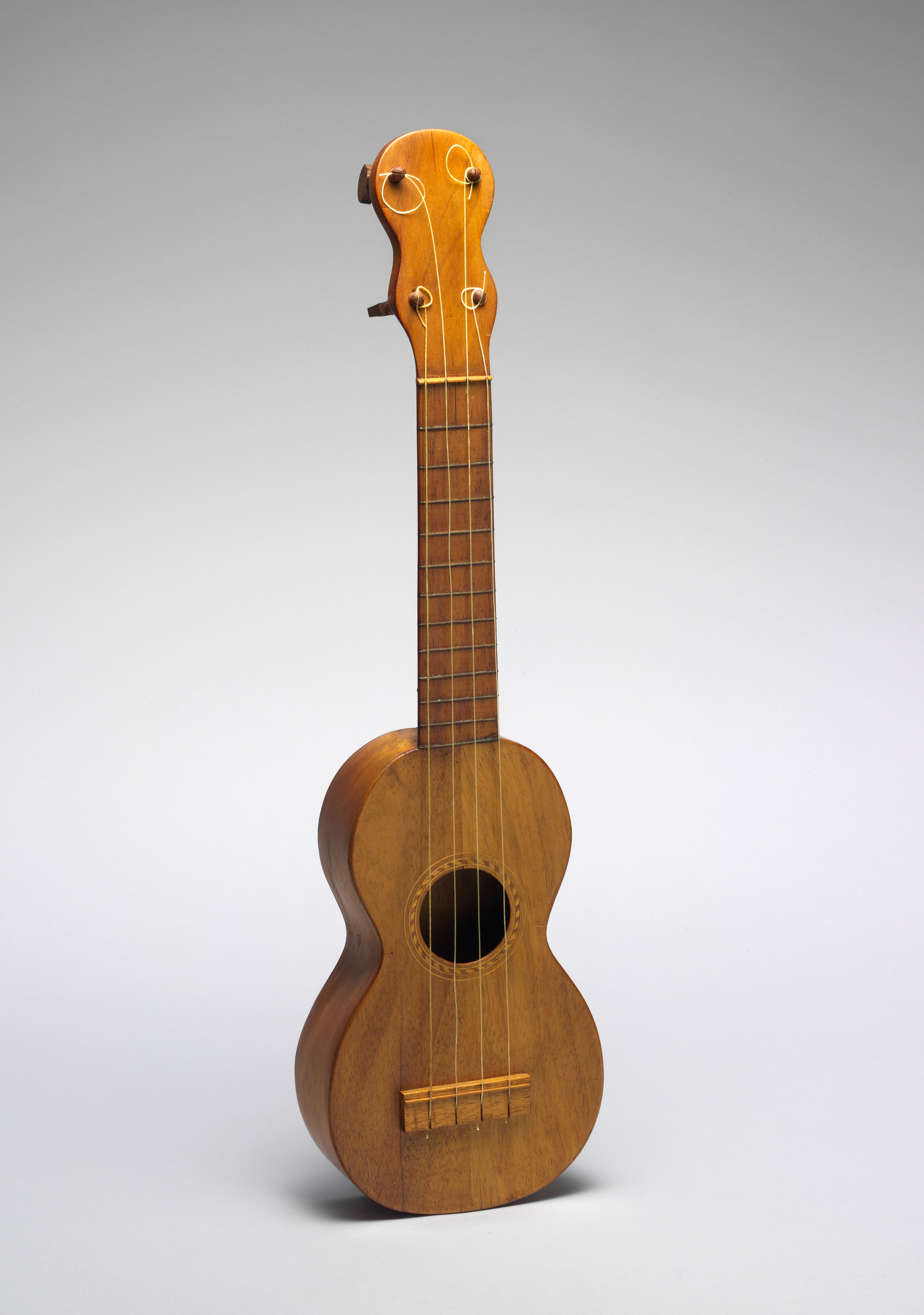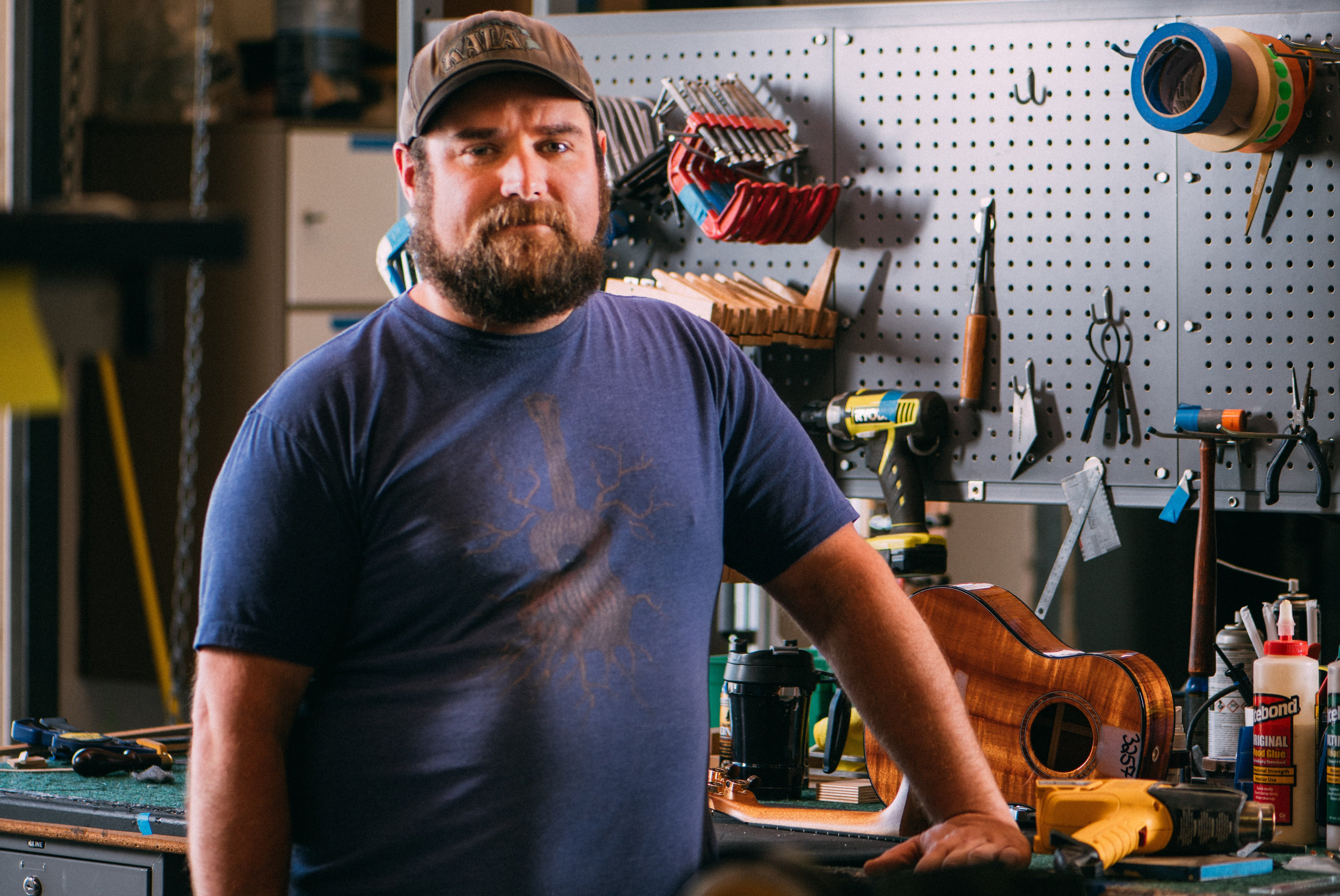Ukuleles are traditionally made in Hawaii. Today, they are also produced globally, in countries like China, Indonesia, and the United States.
Discover the charming world of ukuleles, small stringed instruments with a rich cultural heritage rooted in Hawaii. Since its arrival on the islands in the 19th century, the ukulele has become synonymous with Hawaiian music and aloha spirit. Its popularity has spread worldwide, thanks to its melodic sound, ease of playing, and portability.
Instrument artisans, known locally as luthiers, craft these four-stringed delights using a variety of woods to achieve their distinctive warm tone. Mass-produced ukuleles have become common, catering to a range of skill levels and budgets. Whether handcrafted or factory-made, the ukulele continues to captivate music enthusiasts, igniting a passion for strumming this versatile instrument.
The Roots Of The Ukulele
The ukulele, a symbol of Hawaiian culture, has charmed music enthusiasts worldwide with its light, melodious strums. Yet, this instrument’s journey began far from the sandy shores of Hawaii.
Portuguese Origins
In the 19th century, Portuguese immigrants sailed to Hawaii, bringing with them a small four-stringed instrument known as the ‘machete.’ The machete, constructed traditionally from native woods like koa or mahogany, was a hit in the local communities for its spirited sound.
Hawaiian Adoption And Innovation
Enthusiastically adopted by the Hawaiians, they renamed it ‘ukulele,’ which means ‘jumping flea’ in Hawaiian, a nod to the lively movement of the player’s fingers.
Famous figures like King David Kalakaua helped popularize the instrument, encouraging innovation. Craftsmen enhanced the design, blending Portuguese instrument making techniques with Hawaiian woodwork.

Credit: blog.ukelikethepros.com
Major Ukulele Manufacturing Regions
The ukulele, a symbol of joy and musical simplicity, comes from various corners of the globe. Major ukulele manufacturing regions each offer unique qualities, from handmade artistry to efficient mass production. Let’s explore the places where the strumming magic begins.
Hawaii’s Handcrafted Ukes
Hawaii, the birthplace of the ukulele, is renowned for its exquisite handcrafted instruments. Local artisans, using traditional techniques and native woods like Koa, create instruments that resonate with the aloha spirit.
- Kamaka: Known for quality and history
- Kanile’a: Combines tradition with innovation
- KoAloha: Offers a bright, crisp sound
Mass-produced Models From Asia
Asia is the hub for efficient mass production of ukuleles. Factories in countries like China and Indonesia can produce large quantities, making the instrument more accessible to people everywhere.
| Country | Advantages |
|---|---|
| China | Affordable, diverse models |
| Indonesia | Cost-effective craftsmanship |
Boutique Craftsmanship In The U.s.a.
In the USA, small-scale builders focus on creating unique, premium-quality ukuleles. Custom designs and a personal touch define the boutique uke experience.
- Mya-Moe: Tailored to individual preferences
- Moore Bettah Ukuleles: Hawaiian-inspired, mainland-made
- Cordoba: Integrates Spanish guitar elements
How Ukuleles Are Made
Have you ever wondered how ukuleles transform from simple pieces of wood into instruments of joy? The process is an art, involving careful selection and expert craftsmanship. Let’s explore the steps artisans take to create these melodious treasures.
Selecting The Woods
Quality ukuleles start with high-grade woods. Different woods create unique sounds. Traditionally, Koa wood from Hawaii provides a warm tone, while Mahogany delivers a softer sound.
- Spruce and Cedar are favored for soundboards, enhancing volume and clarity.
- Rosewood and Ebony often form the fretboards and bridges.
- Each wood type is carefully chosen for its resonance and durability.
From Shaping To Stringing
Crafting a ukulele involves precise woodworking skills. The body starts as a rough-cut shape, then artisans meticulously carve, sand, and join the pieces.
- Wood is thinned for the top, back, and sides.
- Curves are shaped around a mold.
- The neck is attached to the body.
- Fretboards are fitted, followed by frets.
- Finally, the ukulele is strung with precision.
The Art Of Finishing A Uke
The final step is all about visual and tactile beauty. A smooth finish not only protects the wood but also affects the sound.
| Finishing Step | Purpose |
|---|---|
| Sanding | Creates a smooth surface for finishing. |
| Sealing | Prevents moisture damage and enhances grain. |
| Applying Lacquer | Adds a shiny, protective layer. |
| Polishing | Gives the ukulele its final luster. |
Artisans apply each layer with care, balancing protection with perfect acoustics.

Credit: www.metmuseum.org
Famous Brands And Makers
Tucked away in sunny climes and remote workshops, ukulele makers create magic with wood and strings. From traditional factories to the workbenches of solo artisans, the ukulele has a rich heritage. Let’s celebrate those famous brands and makers who have left an indelible mark on the world of music.
Kamaka – The Legacy Brand
For over a century, Kamaka has been the cornerstone of ukulele craftsmanship. This legendary Hawaiian brand embodies the spirit of the islands. With a history dating back to 1916, Kamaka is synonymous with quality and tradition. Each instrument is a piece of history, handcrafted with love and aloha.
Kala And Lanikai – Popularizing The Uke
Brands like Kala and Lanikai have broadened the ukulele’s appeal. They offer a diverse range of models to suit every skill level and budget. Kala is known for its innovative designs and commitment to music education. Lanikai excels in delivering quality ukuleles that blend tradition with modern playability. Both brands have played a pivotal role in making the ukulele beloved worldwide.
Custom Luthiers And Their Unique Touch
Away from the assembly line, custom luthiers craft ukuleles with a personal touch. Every hand-built ukulele is a work of art, reflecting the maker’s style and the player’s taste. These artisans use exotic woods and intricate inlays to create one-of-a-kind instruments. Their commitment to excellence ensures that each ukulele is not just an instrument, but a legacy in the making.
The Impact Of Geography On Sound
The relationship between geography and the sound of ukuleles is as intricate as the patterns on their wooden bodies. It’s not just about where these instruments come from; it’s about the very essence that makes up their core – the materials, the making, and the music they’re a part of. Let’s dive into how geography leaves its unique fingerprint on the sound of ukuleles.
Tropical Woods And Tone
The type of wood from which a ukulele is made greatly influences its sound. Tropical woods are often favored for their tonal qualities. Woods such as Koa, which is native to Hawaii, are renowned for their rich, mellow tones. These woods contribute to the distinctive sounds:
- Koa: Warm with a balanced tone
- Mahogany: Soft and warm, enhancing lower frequencies
- Mango: Offers a bright and sweet sound
- Rosewood: Delivers deep and resonant overtones
These woods possess unique properties influenced by climate, soil, and rainfall patterns of their native regions.
Construction Techniques Across Cultures
Skilled luthiers around the world use diverse construction techniques that affect the ukulele’s sound:
| Region | Construction Detail | Sound Impact |
|---|---|---|
| Hawaii | Traditional bracing patterns | Classic Hawaiian sound |
| Portugal | Smaller builds, lighter woods | Bright, lively tones |
| Japan | Precision engineering | Crisp clarity in notes |
Each cultural technique imprints a unique tonal signature on the instrument, showcasing a blend of tradition and innovation.
The Modern Ukulele’s Global Voice
Modern manufacturing meets tradition as ukuleles are now made worldwide. From America to Asia, these are some prominent qualities:
- American: Known for innovative designs and modern materials which offer diverse sounds.
- Asian: Often more affordable with an emphasis on sharp, clear sound due to manufacturing scale.
- European: Tend to respect historical significance, offering a balanced blend of old and new sounds.
With each ukulele, the global voice becomes a symphony of geography and culture, creating a tapestry of tones that resonate with the soul of each place.
Choosing The Right Ukulele
The quest for the perfect ukulele is a melody in itself, a tune of personal choice and striking chords of creativity. This little instrument carries with it a world of sunny vibes and musical joy, but selecting the right one is vital to your playing happiness. Whether you’re a seasoned strummer or a beginner, this journey starts with knowing where ukuleles are crafted and ensuring you make the right purchase.
Identifying Authenticity
True craftsmanship is key when choosing a quality ukulele. Many authentic ukuleles hail from Hawaii, the birthplace of this charming instrument. Look for a label or a stamp inside the ukulele body; it should state the brand, model, and country of origin. Avoid those lacking clear markings as they may be less authentic.
It’s also wise to know the woods used: Koa and Mahogany are synonymous with traditional uke construction. An authentic sound often comes from these materials.
Price Vs. Quality
| Price Range | Expected Quality |
|---|---|
| Under $50 | Mostly for beginners, not durable |
| $50 – $150 | Good for enthusiasts, better sound |
| Over $150 | High-quality, for serious players |
Generally, the price tags of ukuleles reflect their quality. Don’t expect professional quality at rock-bottom prices. However, you don’t need to break the bank to find a decent one. Invest in the best you can afford.
Finding The Perfect Uke For Your Style
- Soprano: Classic, bright sound; best for traditional styles
- Concert: Richer sounds, a bit larger; versatile
- Tenor: Deeper tone, more volume; great for fingerpicking
- Baritone: Closest to a guitar’s range; suited for blues/jazz
Your musical style dictates your uke choice. Play a variety before deciding. Each type offers a different feel and sound.
Listen closely to the sound each produces. Ensure it matches the music you intend to play.

Credit: kalabrand.com
Are Left-Handed Ukuleles Made in the Same Locations as Regular Ukuleles?
When considering unique instruments, exploring left handed ukulele options for musicians can reveal interesting insights into production locations. Many left-handed ukuleles are crafted in the same factories as their right-handed counterparts, often in regions known for ukulele craftsmanship. This shared origin ensures quality and consistency across the board.
Frequently Asked Questions On Where Are Ukuleles Made
Are Any Ukuleles Made In Hawaii?
Yes, several ukuleles are handcrafted in Hawaii. Hawaiian-made ukuleles are renowned for their quality and authenticity.
What Country Is Famous For Ukulele?
Hawaii is widely recognized for its strong cultural association with the ukulele.
Who Makes The Best Quality Ukulele?
Kamaka, Kanile’a, and KoAloha are renowned for manufacturing top-quality ukuleles, favored by professionals for their superior craftsmanship and sound.
Are Ukuleles Made In China Good?
Yes, many ukuleles made in China offer good quality for their price, catering to both beginners and experienced players. They often provide excellent value, balancing cost and craftsmanship.
Conclusion
Exploring the origins of ukuleles has taken us across the globe, from Hawaiian artisan workshops to large-scale Asian factories. Each location imparts a unique touch to the instruments crafted within. Embrace the diversity offered; whether seeking a handcrafted heirloom or an affordable starter, there’s a ukulele out there with a story that resonates just for you.
